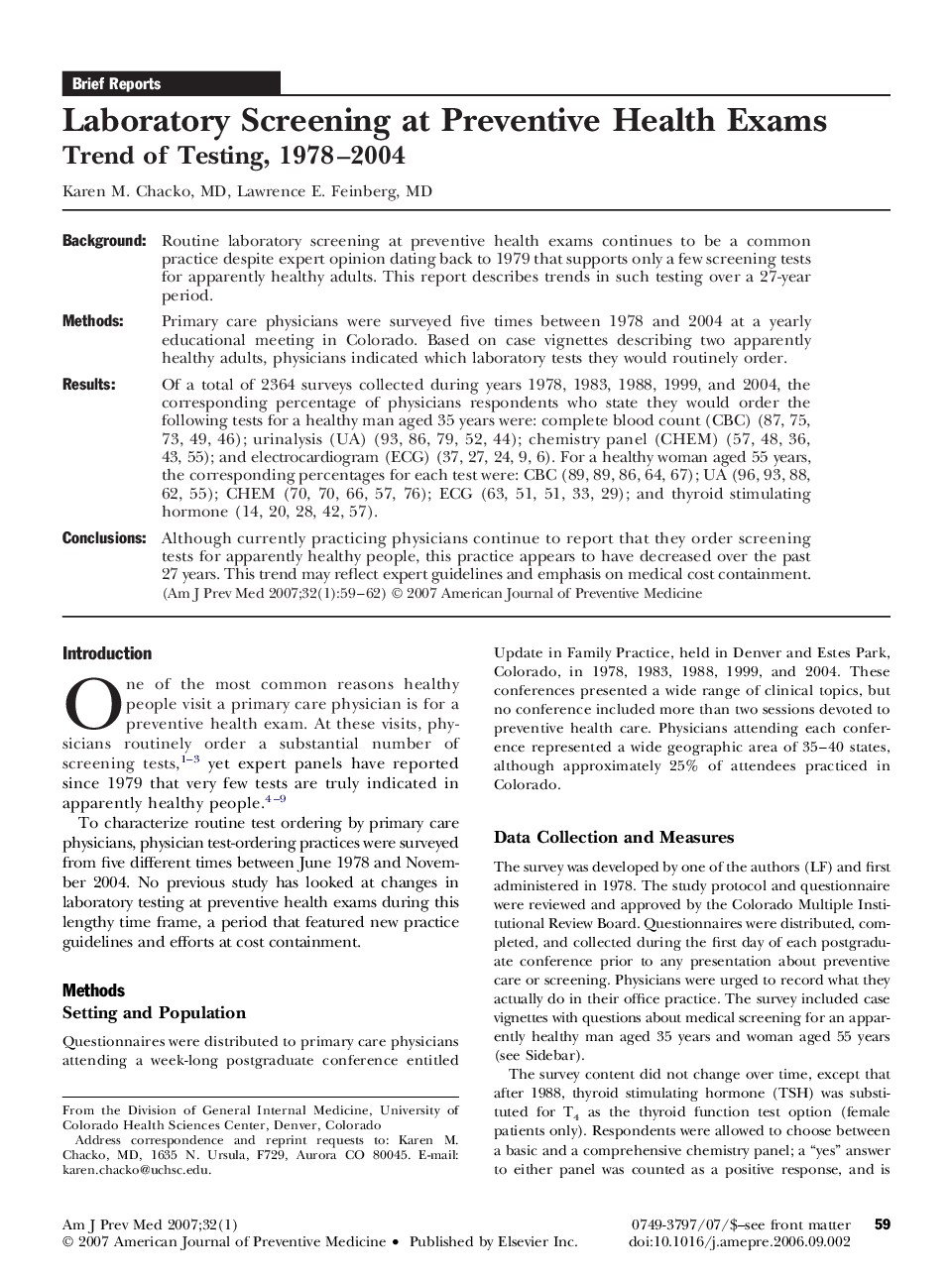| Article ID | Journal | Published Year | Pages | File Type |
|---|---|---|---|---|
| 4194593 | American Journal of Preventive Medicine | 2007 | 4 Pages |
BackgroundRoutine laboratory screening at preventive health exams continues to be a common practice despite expert opinion dating back to 1979 that supports only a few screening tests for apparently healthy adults. This report describes trends in such testing over a 27-year period.MethodsPrimary care physicians were surveyed five times between 1978 and 2004 at a yearly educational meeting in Colorado. Based on case vignettes describing two apparently healthy adults, physicians indicated which laboratory tests they would routinely order.ResultsOf a total of 2364 surveys collected during years 1978, 1983, 1988, 1999, and 2004, the corresponding percentage of physicians respondents who state they would order the following tests for a healthy man aged 35 years were: complete blood count (CBC) (87, 75, 73, 49, 46); urinalysis (UA) (93, 86, 79, 52, 44); chemistry panel (CHEM) (57, 48, 36, 43, 55); and electrocardiogram (ECG) (37, 27, 24, 9, 6). For a healthy woman aged 55 years, the corresponding percentages for each test were: CBC (89, 89, 86, 64, 67); UA (96, 93, 88, 62, 55); CHEM (70, 70, 66, 57, 76); ECG (63, 51, 51, 33, 29); and thyroid stimulating hormone (14, 20, 28, 42, 57).ConclusionsAlthough currently practicing physicians continue to report that they order screening tests for apparently healthy people, this practice appears to have decreased over the past 27 years. This trend may reflect expert guidelines and emphasis on medical cost containment.
